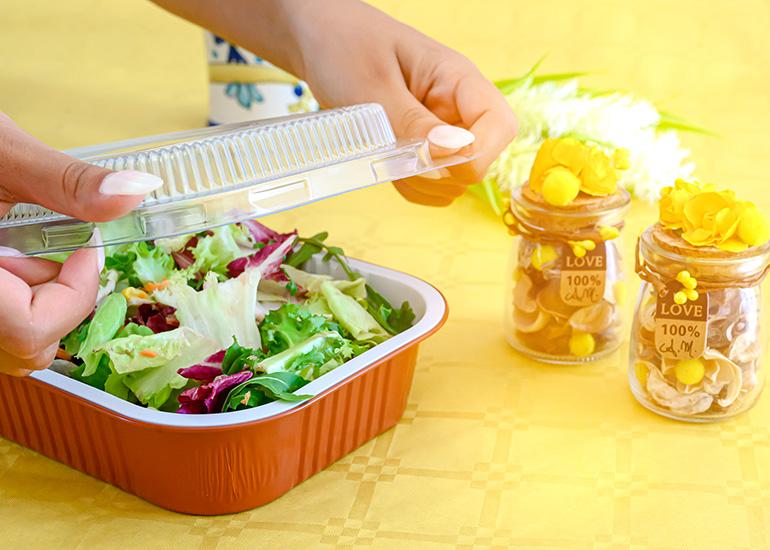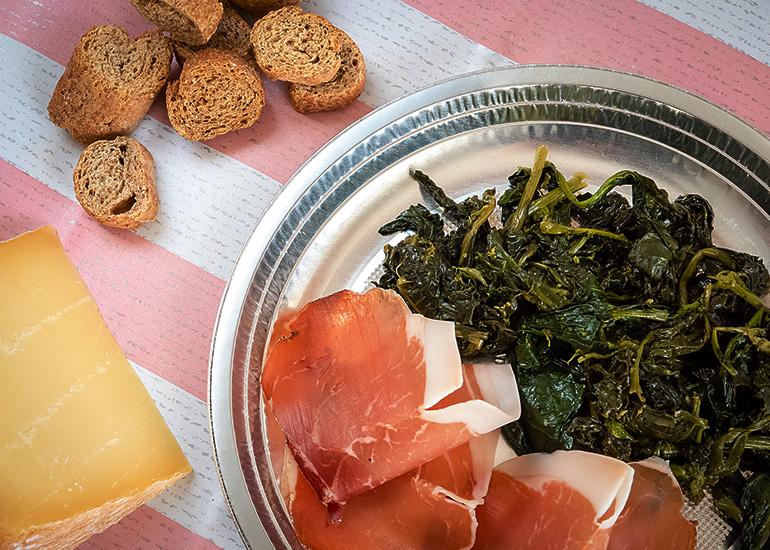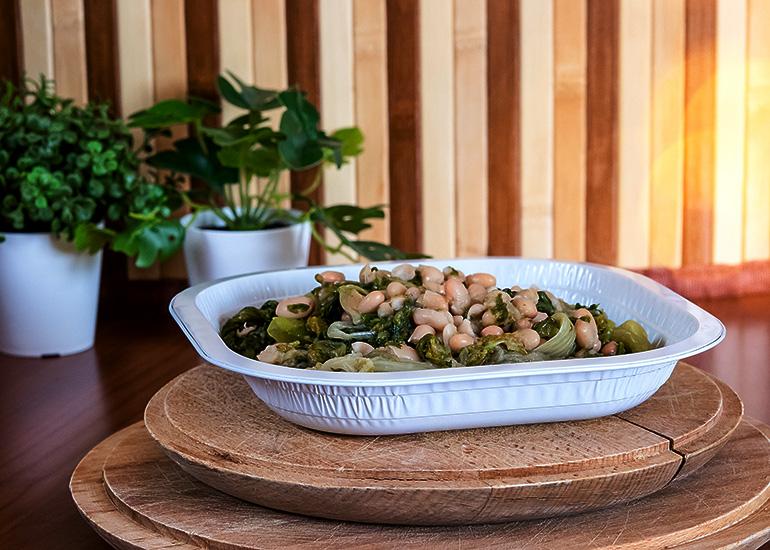Aluminum, witness to changing times
Contital looks at emerging consumer habits and responds with ad hoc packaging and dishes for food delivery, gastronomy and catering. Market considerations, innovative product development and responsible eco-design from the voice of the company’s commercial director, Pasquale Pollice.
Two years after the start of the pandemic, even food packaging manufacturers are having to come to terms not only with what experts have called the “new normal,” but also with a market traversed by sometimes contradictory trends. Certain phenomena are in fact profoundly influencing the food market: first of all, the use of food delivery, which, after the surge recorded during Covid, seems not to stop and affirms a generalized and increasingly widespread change in consumption habits; and then the search for a balance between quality and cost of supply manifested by the catering industry, to arrive at consumers, who are increasingly attentive to their shopping carts but who, nonetheless, express a particular interest in sustainable products.
Pasquale Pollice, sales director of Contital, a company that has been producing and distributing aluminum trays and rolls throughout Europe for more than 30 years, talks to us about this and much more.
More than 2 years after the start of the pandemic, food delivery is an established trend. What advantages do aluminum containers offer in this area?
And what is the impact on your business? The pandemic has helped create new consumption habits, such as food delivery and the presentation of food in sealed or unopened packages for the free service of large-scale retail, restaurant, and traditional food service. This has led to strong growth in sales volumes of containers suitable for takeout and delivery, which have remained high even after the relaxation of restrictions, especially in the restaurant industry.
Aluminum moreover possesses a number of characteristics that make it ideal for multiple applications, and which are only partially found in other materials. It is, in fact, the only material that allows food to be transported, heated, consumed, or refrigerated in the same container or dish. This is a plus that has produced significant sales volumes, as it is recognized both by professional caterers, who employ it in food delivery, and by consumers, who find aluminum containers and plates a viable sustainable alternative.
Have you come up with new products specifically for take-out food?
The growth of food delivery has stimulated many innovative projects for new packaging solutions that are 100% recyclable after use.
For example, we have developed a line consisting of 60 items, including rigid formats and with handles, from single-serving to twelve-serving, available with preformed lids made of cardboard and recyclable material. These product ranges account for more than 20% of the company’s total sales.

Contital is a recognized leader in the trays market. You have now patented and introduced recycled aluminum trays-how did the idea for such an alternative product to your traditional production come about? In what sectors are you offering them?
The disposable plates sector has actually had to reinvent the production chain in order to comply with European directives that have banned single-use plastic products that cannot be recycled from the market. This has also forced the retail sector to revise assortments, making room for alternative materials.
Thus, Contital’s patented recycled aluminum disposable plate has been chosen by major Italian large-scale retail groups, entering the category of disposable products qualified under the Distributor’s Mark (MDD), generating new sales. The preference for aluminum is also confirmed by double-digit growth in the traditional delicatessen channel and in the free-service counters of the GD.
In developing the disposable plate line, you have been able to reconcile design and production skills with aesthetics, which is no bad thing when it comes to “talking” to consumers.
The patented Contital line includes circular super-deep, deep, flat, dessert and even square plates, all offered as standard in white or silver coloring. And they are appreciated because they are extra-rigid, suitable for eating all kinds of foods, suitable for use in conventional and microwave ovens, and also suitable for freezing and deep-freezing. It is this set of pluses that has won the trust of supermarkets, fostering the spread of the product and causing us to expect even greater growth in the future.

In addition to meeting consumer (and marketing) needs, this product line is also a testament to Contital’s proactive adherence to sustainability issues.
We believe that recyclable material is the compulsory route to real sustainability; therefore, we analyzed our aluminum plates with a Life Cycle Assestment (LCA) study and obtained particularly interesting environmental impact values. In practice, Contital has demonstrated on scientific grounds that, thanks in part to a fully integrated supply chain, the dishes also have environmental validity. In addition, we share the green commitment of Europe, which is increasingly active in ensuring responsible consumption. We already produce standard aluminum containers with 98.6% recycled raw material and, for disposable plates, we have gone as far as 100% , all data, these, also certified by the REMADE IN ITALY body.
I would also remind you that the use of recycled (secondary) aluminum also saves 95% of the energy that would be required for the production of primary aluminum, as well as drastically reducing the related CO2 emissions. These days, energy conservation has become as important a topic as environmental sustainability, and is of interest to consumers and professional users alike.
Are you working on new projects or new product ranges?
Product innovation has always been a hallmark of our company, and because of this, we hold numerous patents that have given us a competitive edge in many areas in recent years. The disposable aluminum container market, on the other hand, is now mature and therefore needs to be constantly renewed with innovations that meet the new requirements of an industry that is constantly changing.
This is why we already have several new products in the pipeline that can meet specific demands in terms of formats or applications, and that are always developed with an eco-design perspective. In particular, I just want to mention that we are working on containers intended for “ready-to-cook meat preparations”. But we will have a chance to talk about that in the near future.





















